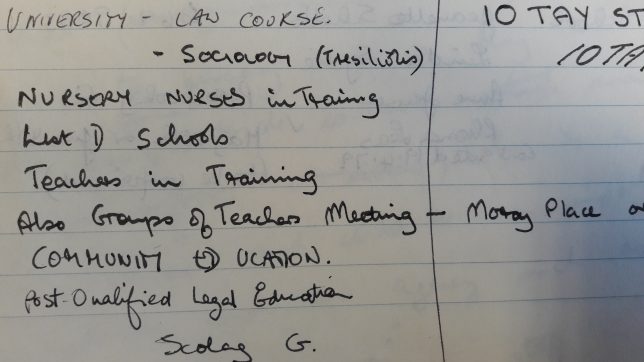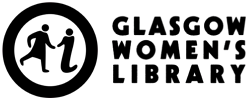Today, we hear from project volunteer Susie Dalton about her involvement in developing a learning resource based on the material collected by the Speaking Out project to be used in secondary schools and by youth organisations to engage young people with the topics of gender inequality, gender-based violence and domestic abuse and the history of the Women’s Aid movement in Scotland.

I joined the Speaking Out Project in spring last year as a volunteer filmmaker – you can read more about my experience here. After filming wrapped up and the exhibition opened, Sarah Browne (the Project Co-ordinator) mentioned that there was an educational resource in the pipeline.
I’d worked in informal education for years, but had never had the chance to contribute to a resource that focused on women and girls. I jumped at the chance to join the group developing the resource, doing so in November 2016.
Why an educational resource?
Something that comes up often in the interviews we are collecting for the project is a deep concern for the challenges that young women face today. Gender-based violence and abuse have new platforms – smart phones, social media and the availability of porn with violent or degrading content being just some of them.
A 2016 report by the Women and Equalities Committee found that young women and girls in school experience shocking levels of verbal, physical and sexual abuse. For example, 59% of girls and young women aged 13-21 said they had faced some form of sexual harassment at school or college in the previous year. The report highlighted the lack of support and resources available to teachers in speaking about, identifying and reporting these issues.
We’re aiming to make a learning resource that communicates the impact and importance of the Women’s Aid movement in Scotland to secondary school pupils. Designed to fit in with the Modern Studies curriculum, the learning resource will explore why Women’s Aid exists, how it began in Scotland and what it has changed in personal and political landscapes. It will also explore the broader themes of gender-based violence and domestic abuse, comparing the forms it takes and societal attitudes between when Scottish Women’s Aid was first established in 1976 and today. The resource will feature some of the oral history interviews captured in the project, a few of which are available to listen to here.
We hope that the resource will offer teachers an opportunity to tackle a subject many find difficult to broach, and empower young people to be aware of abusive behaviours, gender inequality and the role that Women’s Aid in Scotland plays. As seen in a 2015 report by the Young Women’s Movement, young women may not initially identify particular events or treatment as being gender-biased until discussing them further. We’re hoping the resource sparks conversations in the classroom, not just amongst young women, but also young men.
Being part of this group, and the Speaking Out Project as a whole, has been an incredible opportunity. It has been a privilege to hear from and work with such inspiring women, and to contribute to a resource that I wish my teachers had had. I hope the educational resource will continue to be used for a long time after the project is completed.
After piloting and tweaking in the coming months, the resource is set to launch in June 2017 to be incorporated into lesson plans for the next school year.

Comments are closed.